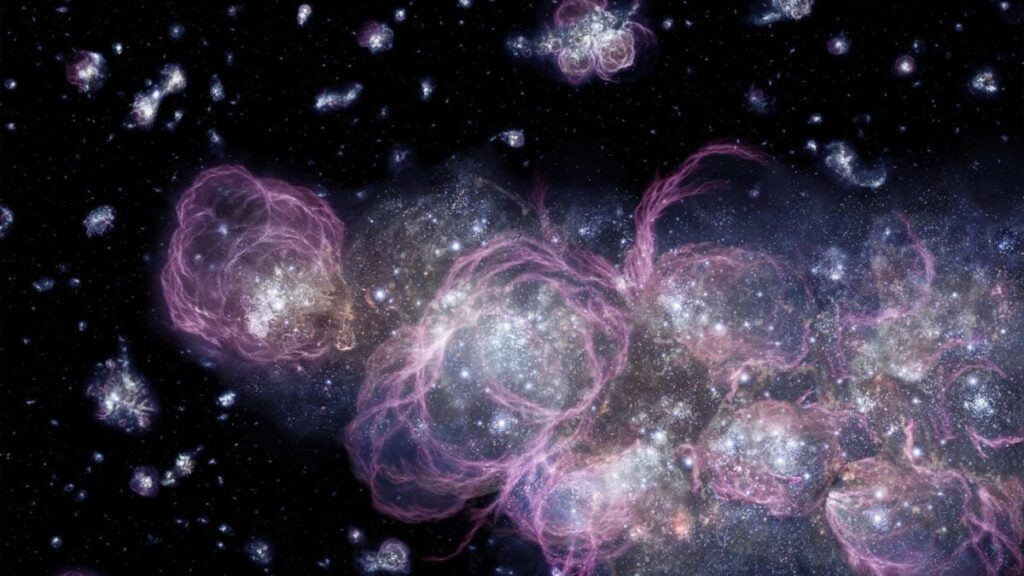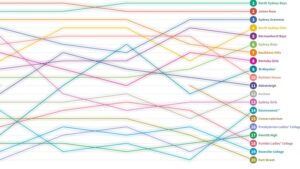
Following the Big Bang, our universe expanded at an exponential rate. This rapid expansion, known as cosmic inflation, is believed to have produced tiny quantum fluctuations that later evolved into galaxies. While cosmic inflation has long been a cornerstone of cosmological theory, explaining the universe’s vastness and relative uniformity, it is not without its flaws. The theory relies on several arbitrary assumptions, which have prompted theoretical physicist Raúl Jiménez from the University of Barcelona to propose an alternative model. This new theory, published in Physical Review Research, aims to simplify the understanding of the early universe by eliminating the need for excessive parameters.
The proposal by Jiménez and his colleagues introduces a paradigm grounded in the principles of quantum mechanics and general relativity. It posits that the early universe existed in a De Sitter space—a flat-shaped vacuum governed by general relativity. According to quantum mechanics, the energy from the Big Bang generated quantum fluctuations, leading to gravitational waves that seeded density variations throughout the universe. These variations eventually formed galaxies, stars, and planets.
Challenging the Status Quo
Critics of traditional inflationary theory argue that it contains too many adjustable parameters, such as the hypothetical inflaton fields thought to drive rapid expansion. The new theory eliminates the inflaton, replacing it with a De Sitter space influenced by gravitational waves. Arthur Kosowsky, a cosmologist at the University of Pittsburgh, noted, “There is no general principle that determines these things, so basically you need to put them in by hand.” He emphasized the importance of simplicity in theoretical models, which should minimize arbitrary elements.
The complexity of existing models is not unique to cosmic inflation. The Standard Model of particle physics, for instance, includes 18 free parameters that must be adjusted. Kosowsky remarked, “Physicists expend lots of blood, sweat, and tears (and money) because most people are convinced that there must be a better, more powerful model which has two or three parameters instead of 18.”
Implications and Reactions
Jiménez’s theory is notable for being “fully falsifiable,” meaning it can be tested against observational data. However, Jiménez acknowledged the risk that nature may not conform to this model. “The most valuable thing about falsifiable theories is that they tell us what doesn’t work,” he explained. This approach is akin to a process of elimination used in other areas of physics, such as the study of dark matter.
Andrew Liddle, a theoretical cosmologist at the Institute of Astrophysics and Space Sciences in Lisbon, praised the new proposal, stating, “I believe it’s an interesting and novel proposal—it’s something that’s well worth a closer look.” However, he also cautioned that the theory’s simplicity might be its greatest flaw.
Marina Cortês, also from the Institute of Astrophysics, expressed skepticism about traditional inflationary theory, noting that while many cosmologists agree on its occurrence, the details remain contentious. “One of the most uncomfortable things about inflation is that physicists understand everything from the Big Bang onwards, but not the Big Bang and the earliest stages,” she said.
The Future of Cosmological Theories
Despite the challenges, the field of cosmology is ripe with new ideas and models. “Cosmology right now is mostly about these things called tensions, or hints that things are not quite well aligned with the standard cosmological model,” Liddle explained. Issues such as dark energy and the Hubble tension are converging, potentially reshaping our understanding of the universe.
Jiménez remains optimistic about the future of cosmology. “Not only is the data growing at exponential amounts, but the quality of the analysis is also growing at an exponential quality,” he said, suggesting that we are living in a “golden age of cosmology.”
Kosowsky added, “When we are thinking about inflation, we are trying to take the next step and answer the question of why the universe looks the way it does, and not just describe how it looks.” This pursuit of deeper understanding drives physicists to explore new theories and push the boundaries of current knowledge.
As the scientific community continues to debate and refine these theories, the quest to unravel the mysteries of the early universe remains a captivating and evolving journey.







